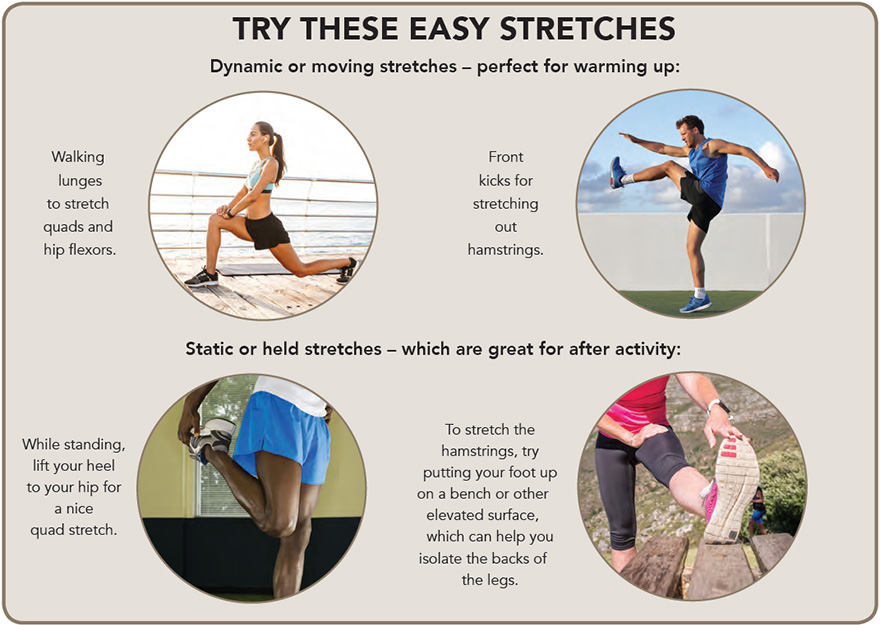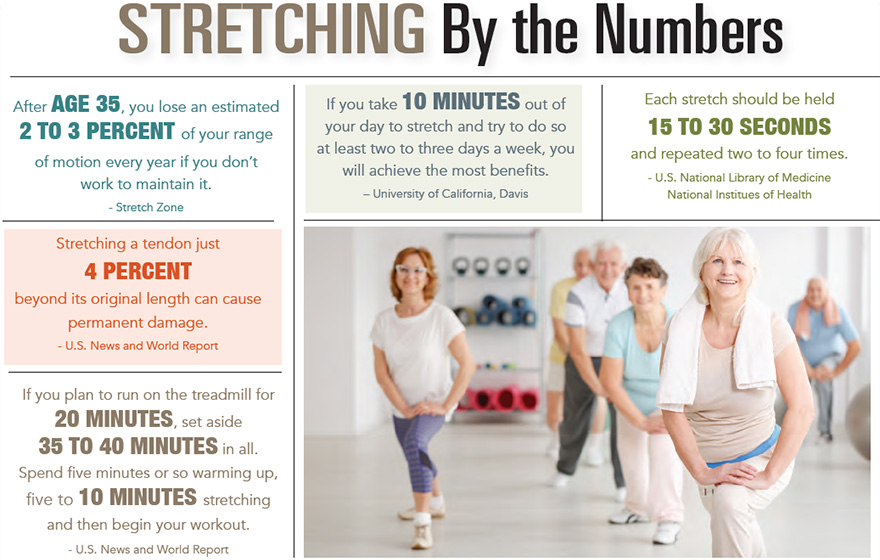Everyone knows that you’re supposed to stretch before a jog to help warm up your muscles and prevent injuries during exercise. But who is aware that regular stretching is one of the best things you can do to keep your body healthy, avoid injury and even prevent some signs of aging as you get older? Experts agree that it’s just as important as eating right, getting enough sleep and staying active.
How Stretching Works and Why It’s Important
Stretching is just as important for people who sit at desks all day as it is for athletes who often push their bodies to the limit.
“Stretching helps elongate muscles, warm them up before activity and helps loosen the body up so it takes pressure off of joints,” said Michael Barr, a physical therapist with the Medical University of South Carolina.
In short, taking the time to stretch increases your mobility, makes it more comfortable to do day-to-day tasks and also can help you prevent injuries to your tendons and joints.Plus, stretching helps get your muscles the nutrients they need so that they can perform at their best, said Barr.
“Stretching Increases the blood supply to that area, which prepares the muscles for activity and brings more nutrients, including calcium, potassium and sodium,” he explained. “These nutrients allow the muscles to heal themselves over time, generate strength and grow. It’s the cellular process which allows them to do what they need to do.”
The increased blood supply can also help your muscles stay hydrated and avoid cramps, which is especially important in warmer climates such as South Carolina, Barr noted.
Stretching to prevent Injuries
It’s clear that stretching offers a lot of positive benefits for health. But what if you just don’t take the time?
“If you don’t stretch, muscles can get tight, causing the joints to not move as much, which leads to pain,” Barr said.
Tim Crunk, a physical therapist at Crunk Physical Therapy in Greer, South Carolina, agreed: “If there is limited flexibility, a person will be at greater risk for muscle strains, tendonitis or tendonosis and even joint injury.”
This risk becomes greater as you age. People begin to notice a decrease in flexibility in their 30s, and that decrease becomes more pronounced every year. It’s important to note that this problem doesn’t affect only athletes. In fact, Doug Glover, a founder of Stretch Zone, a franchise that helps stretch people safely, said he sees many people hurt their backs doing everyday activities like shaving or brushing their teeth.
That has a lot to do with our modern sedentary lifestyles.
“Fifty years ago, we were a society of makers and doers,” Glover said. “Now we’re a society of people who sit behind a computer all day.”
Our sedentary lifestyles might also be the reason many people don’t know how to stretch correctly or effectively, which is why Stretch Zone’s goal is to help people stretch the correct muscles to an optimal point and relax their stretch reflex over time so they don’t tighten their back later, Glover said.
Don’t Make These Mistakes
Not isolating the correct muscle.
One mistake a lot of people make is using a different part of their body to compensate instead of stretching the intended muscle or muscle group. For example, someone might think that trying to touch their toes would stretch their hamstrings – the backs of the legs – but, if they round their back as they bend over, they might not be stretching their hamstrings much at all.
Not being consistent enough.
“Stretching is not one of those things that will fix you in one shot and you walk away from it,” said Glover. “You have to incorporate it into your lifestyle.”
That means most people should stretch correctly at least several times a week to reap the benefits.
Going too far.
One of the biggest mistakes people make is pushing themselves too much and overstretching. You should never feel pain as you stretch. Go slow and try to build your flexibility over time, not overnight.
Comparing yourself to others.
“There are people who have greater elasticity and range of motion available while others are stiff or tight by genetics. But everybody can make gains,” Crunk said. “We might start at different points, and we might end at different points, but everyone can improve.”
By Erica Rodefer Winters


